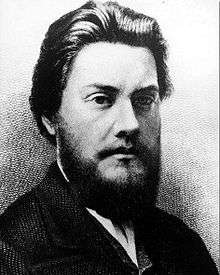Alexei Fedchenko
| Alexei Pavlovich Fedchenko | |
|---|---|
 | |
| Born |
February 7 [O.S. February 19] 1844 Irkutsk, Russian Empire |
| Died |
August 31, 1873 (aged 29) Mont Blanc, France |
| Alma mater | Moscow University |
| Known for | Exploration of Turkestan |
| Scientific career | |
| Fields | Biology, geography, exploration |
| Author abbrev. (botany) | A.Fedtsch. |
Alexei Pavlovich Fedchenko (Russian: Алексей Павлович Федченко; 7 February 1844 – 15 September 1873) was a Russian naturalist and explorer well known for his travels in central Asia. Alternative transliterations of his name, used in languages such as German, include "Aleksei Pavlovich Fedtschenko" and "Alexei Pawlowitsch Fedtschenko".
Biography
Fedchenko was born at Irkutsk, in Siberia, and after attending the gymnasium of his native town, proceeded to the University of Moscow, to study zoology and geology.[1]
He married Olga Armfeldt, a botanist.[2]
In 1868, he and Olga travelled through Turkestan, Samarkand, Panjkent, and the upper Zarafshan River valley. In 1870, they explored the Fan Mountains south of the Zarafshan. In 1871, they reached the Alay Valley at Daroot-Korgan and saw the northern Pamir Mountains but were unable to penetrate southward.
He also collected significant numbers of insects from three explorations from 1869 to 1873. These were then studied by Ferdinand Morawitz in St Petersburg. He recorded 438 species belonging to 36 genera from Central Asia, 68 species of Andrena, 17 species from Europe, and 51 new species.[3]
Soon after their return to Europe, he perished on Mont Blanc while engaged in a tour in France.[4] He had been trying to look at glaciers in France to see how they compared with those in Turkestan. His wife had him buried in Chamonix.[5]
After he died his wife published his investigations and work, before she started re-exploring. She later worked with her (and Alexei's) son Boris Fedtschenko, but Olga remained an important botanist in her own right.[6]
Alexei Fedchenko discovered the life cycle of Dracunculus which causes Dracunculiasis, more commonly known as Guinea worm disease (GWD).
Accounts of the explorations and discoveries of Fedchenko were published by the Russian government: his Journeys in Turkestan in 1874, In the Khanat of Khokand in 1875, and Botanical Discoveries in 1876. See also Petermann's Mittheilungen (1872–1874).[1]
The Fedchenko Glacier in the Pamirs is named after him, as is the asteroid 3195 Fedchenko.
The botanical epithets fedtschenkoi and fedtschenkoanus may each refer to either Alexei Fedtchenko, or his son Boris Fedtchenko. Primula fedtschenkoi (Regel) was named after him in 1875.[7] Bambusa fecunda fedtschenkoi, may have been named after him, also a lacewing in 1875, Lopezus fedtschenkoi (MacLachlan).[8] A species of gecko, Tenuidactylus fedtschenkoi, is named in his honor.[9]
Works
- 1875 Puteshestvie v Turkestan; zoogeographicheskia izledovania. Gos. izd-vo Geograficheskoi Literatury, Moskva.
Notes
- 1 2

- ↑ "Fedtschenko, Olga Alexandrowna (1845-1921)". plants.jstor.org. Retrieved 2 October 2014.
- ↑ Tadauchi, Osamu (30 June 2006). "The Genus Andrena from Kazakhstan and Kyrgyzstan, Collected by the Kyushu University Expedition (Hymenoptera, Andrenidae) (1)" (PDF). catalog.lib.kyushu-u.ac.jp. Archived from the original (pdf) on 2014-10-06. Retrieved 2 October 2014.
- ↑ Rix, Martyn; Strange, Kit (April 2017). "855. IRIS STOLONIFERA". Curtis's Botanical. Volume 34 (Issue 1): 11–20. doi:10.1111/curt.12175. Retrieved 7 March 2018.
- ↑ Mary R. S. Creese (12 March 2015). Ladies in the Laboratory IV: Imperial Russia's Women in Science, 1800-1900: A Survey of Their Contributions to Research. Rowman & Littlefield Publishers. pp. 71–75. ISBN 978-1-4422-4742-0.
- ↑ "Fedtschenko, Aleksei Pavlovich (Alexei Pawlowitsch) (1844-1873)". plants.jstor.org. Retrieved 2 October 2014.
- ↑ Eveleigh, Pam (2013). "Primula fedtschenkoi ". primulaworld.com. Retrieved 2 October 2014.
- ↑ "Bulletin of Zoological Nomenclature" (pdf). bangor.ac.uk. March 2000. Retrieved 2 October 2014.
- ↑ Beolens, Bo; Watkins, Michael; Grayson, Michael (2011). The Eponym Dictionary of Reptiles. Baltimore: Johns Hopkins University Press. xiii + 296 pp. ISBN 978-1-4214-0135-5. ("Fedtschenko", p. 88).
- ↑ IPNI. A.Fedtsch.
References
- Robert Middleton and Huw Thomas, "Tajikistan and the High Pamirs", Odyssey Guides, 2008
- Baker, D. B., 2004 Type material of Hymenoptera described by O. L. Radoszkowsky in the Natural History Museum, London,and the localities of A. P. Fedtschencko's Reise in Turkestan Dt. ent. Zeitschr. 51, 231-252.
- Lohde, G. 1873 [Fedtschenko, A. P.] Berl. Ent. Ztschr. 17 236-238.
- Mac Lachlan, R. 1973 [Fedtschenko, A. P.] Entomologist's Monthly Magazine (3) 10(1873–74)141.
- Pesenko, Yu. A. & Astafurova, Yu. V. 2003: Annotated Bibliography of Russian and Soviet Publications on the Bees 1771 - 2002 (Hymenoptera: Apoidea; excluding Apis mellifera). Denisia 11 1-616.
- Regel, E. 1874 [Fedtschenko, A. P.] Regel, Gartenflora 3-7, Portr.
External links
